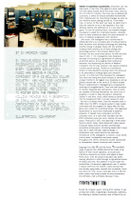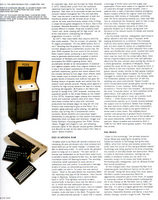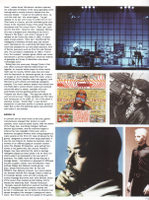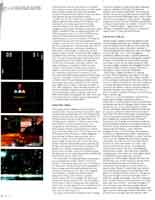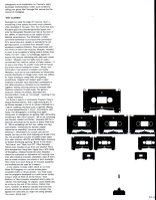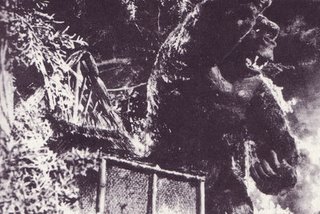Hot on the heels of a post over on the Official Blog of The Wire: Reading List - Environmental Agents: The Art of Field Recording. I finally got around to shaping up some scans of an old article from the magazine of the same name that has been doing time on the coffee table lately. Hard to believe I've been in possession of it since 2002, and that it somehow rose to the top of the pile over the past few weeks, but such is the case when you are talking about quality journalism in this day and age. (still a soft spot in my heart for print too, as it were)
So, in addition to the tasty round-up of links of the The Mire to whet your appetite, I'm also putting up some scans from an article entitled "Acoustic Ecology" from December of 2002. (go ahead and buy the whole mag, it's excellent!)
Acoustic Ecology - The Wire Issue 226 December 2002
Regarding our emerging man made soundscapes and the perception of what sounds "good":
"One of the things that bothered me about the WSP was that they never asked people about their sound environment. They made a lot of assumptions from a musical point of view about what people liked or didn't like about the soundscape. Sounds that soundscape musicians moan about, like traffic and aircraft noise - for some people, those are their favorite sounds."I've read a bit about the crowding of the spectrum from Bernie Krauses book "Into a Wild Sanctuary: A Life in Music and Natural Sound" which is a recommended read if only for the behind the scene's story of George Harrison and the liberated synthesizer sounds. (not to mention the far out styling of the recorded In a Wild Sanctuary, which was my first introduction to Beaver and Krause...and the origination of the THX sound earcon) There's plenty of value in what he has to say about our dying ecosystem and loss of soundscapes. However, I also count several man made sounds amongst my favorites...so color me conflicted, as anyone who feels their impact upon the planet should with regards to the role they play in sustaining the human race here on earth.
"There are times when a plane in the distance, particularly if it's a propeller engine, is a really nice drone, and there are times when you have constant jets going overhead, which make you want to scream. I think trains generally sound pretty nice. What I personally object to is traffic noise - this broadband spectrum which prevents you from hearing everything else. There are many reasons for getting people out of cars or trucks, and their effect on what we are able to hear is certainly one of them" - Peter Cusack
On the topic of what role soundscapes serve in the general public:
"It's about getting folks to value sound. This appreciation can be one more impetus to NOT let habitats die out. The hope of these recordists is that, by the end we have a deeper appreciation for the rich variety and abundant unity of the voice of our planet. Perhaps we'll even find a way to help our voices blend more graciously, more respectfully, more receptively; from there, we may find our way back to the old ways that believe the whole story is about actively nurturing relationships with all of life." Jim Cummings
Still haven't had enough, dig into some of the great links posted over here: Music of Sound Blog - Sound Maps
Best of luck on your sonic adventures!
-lcl






